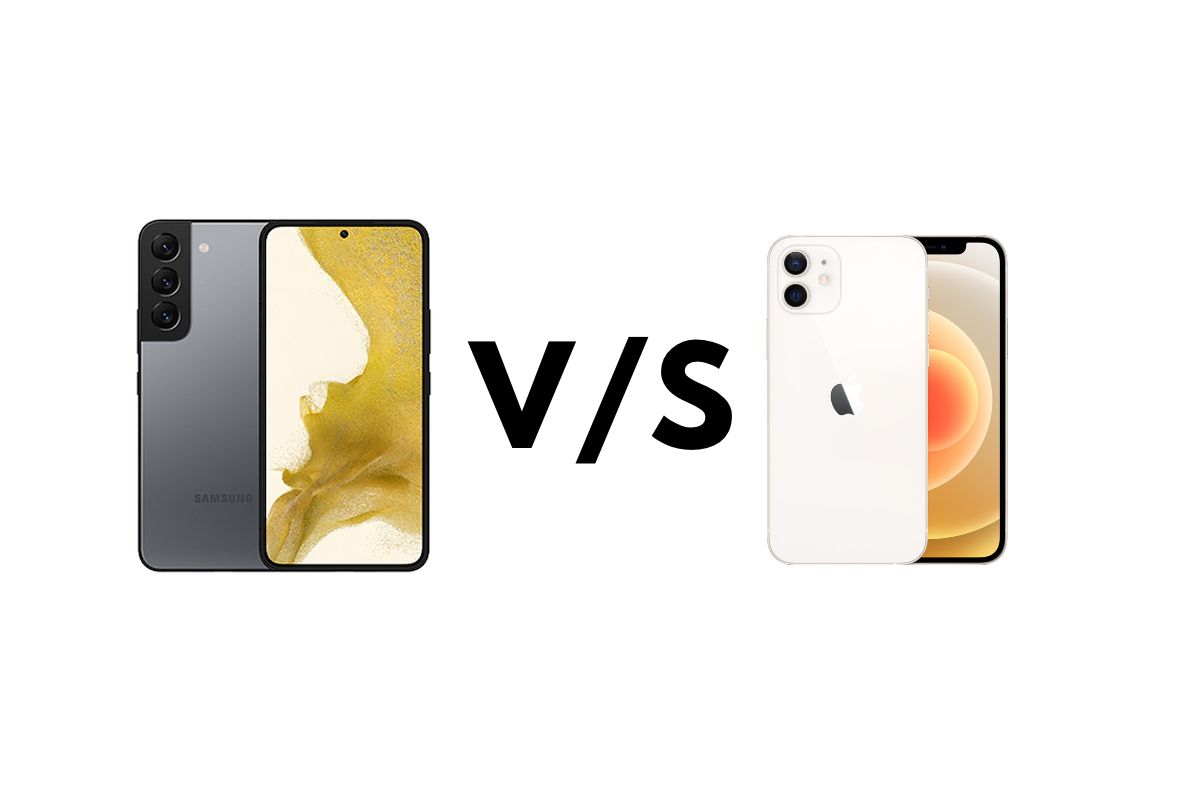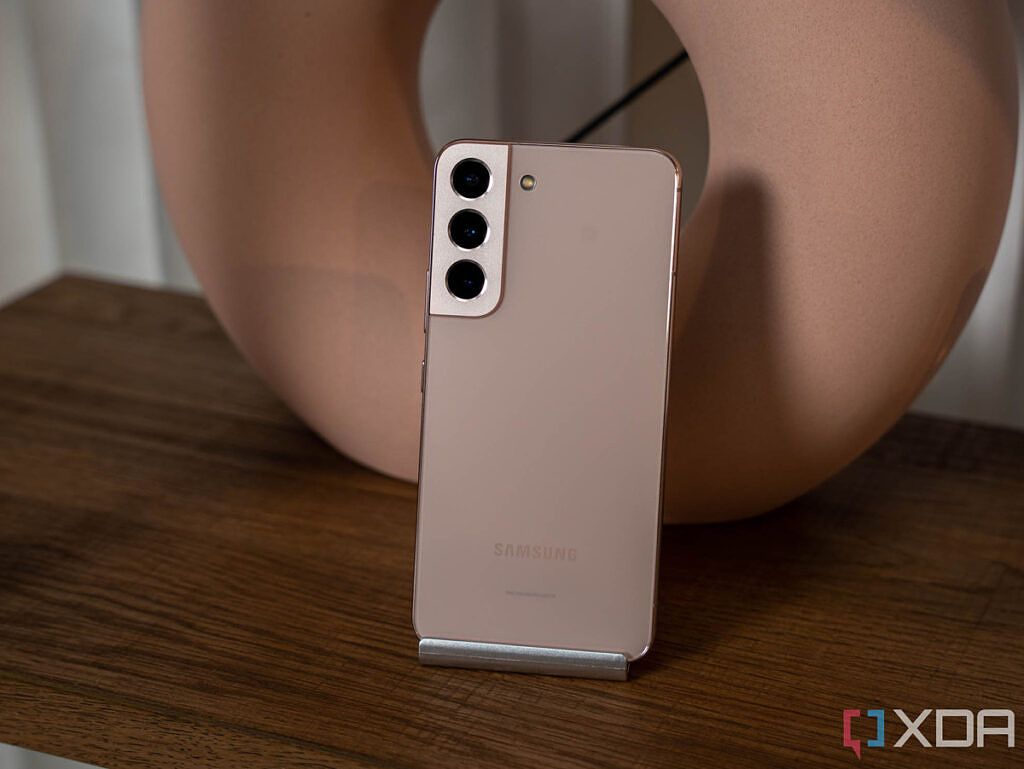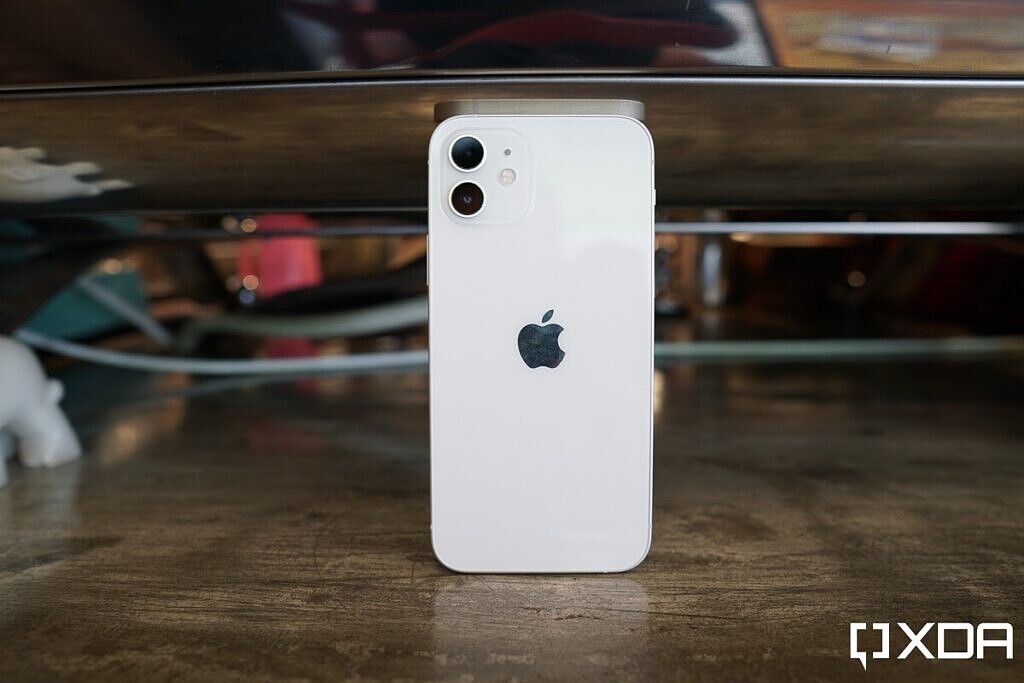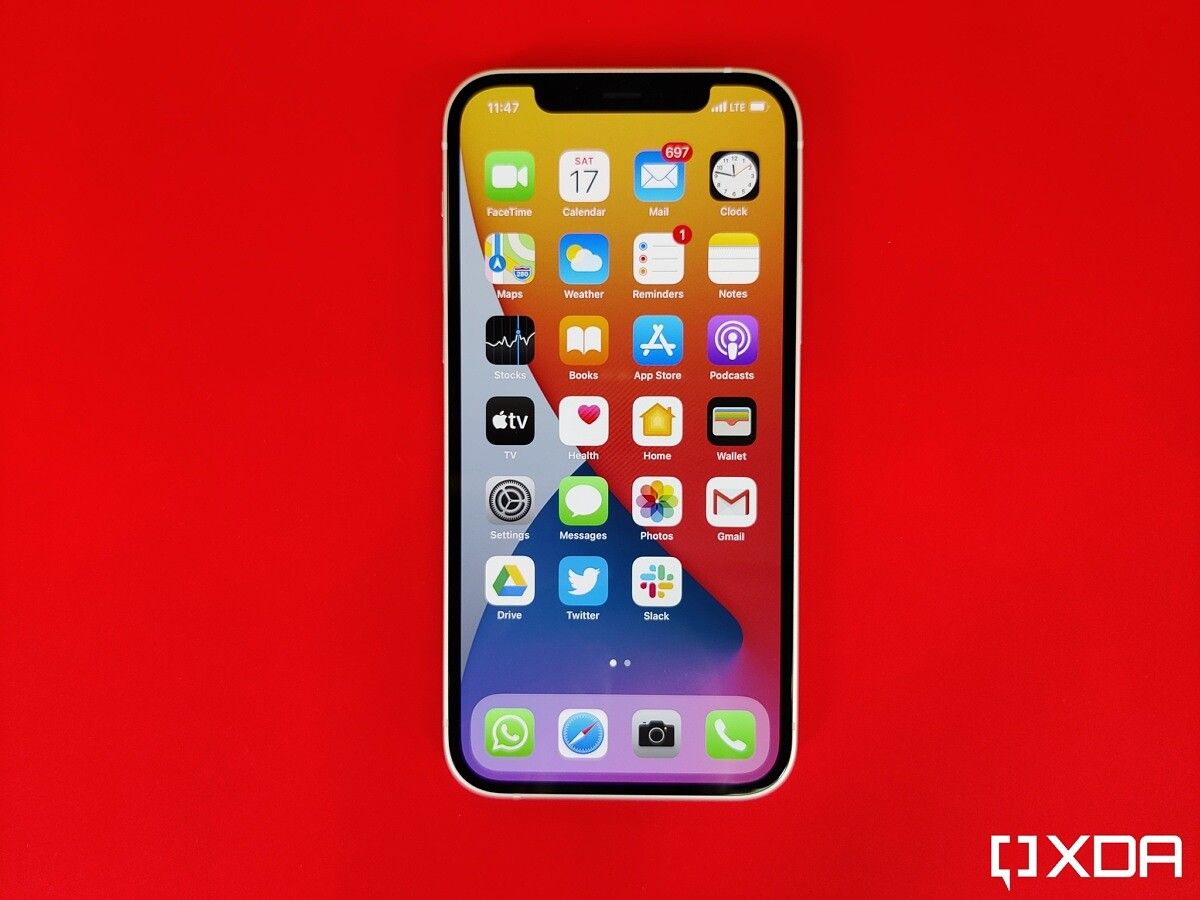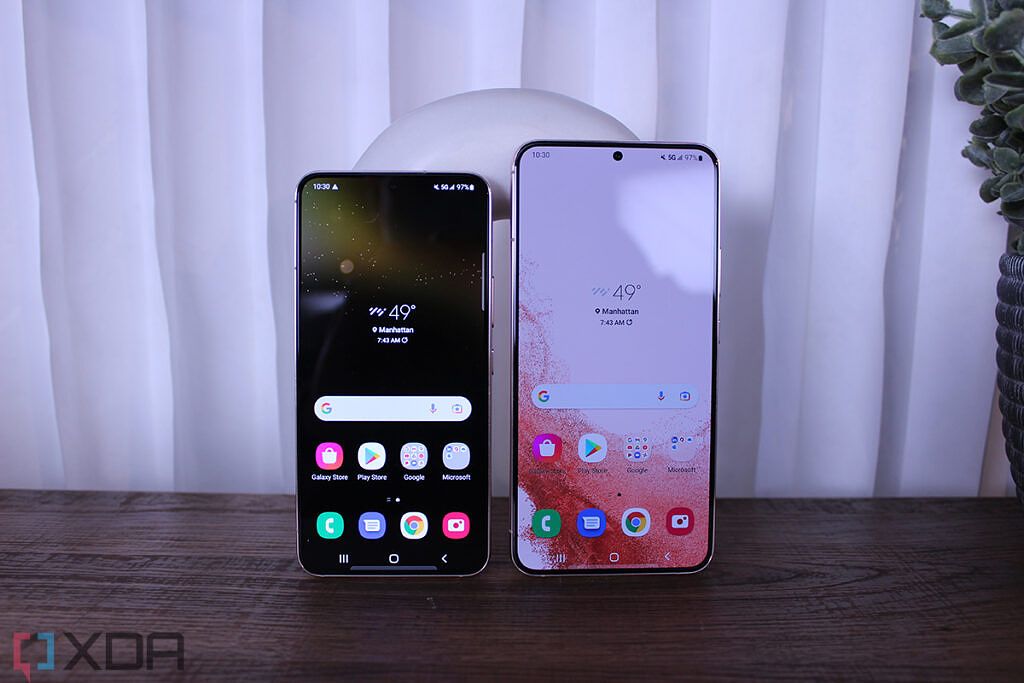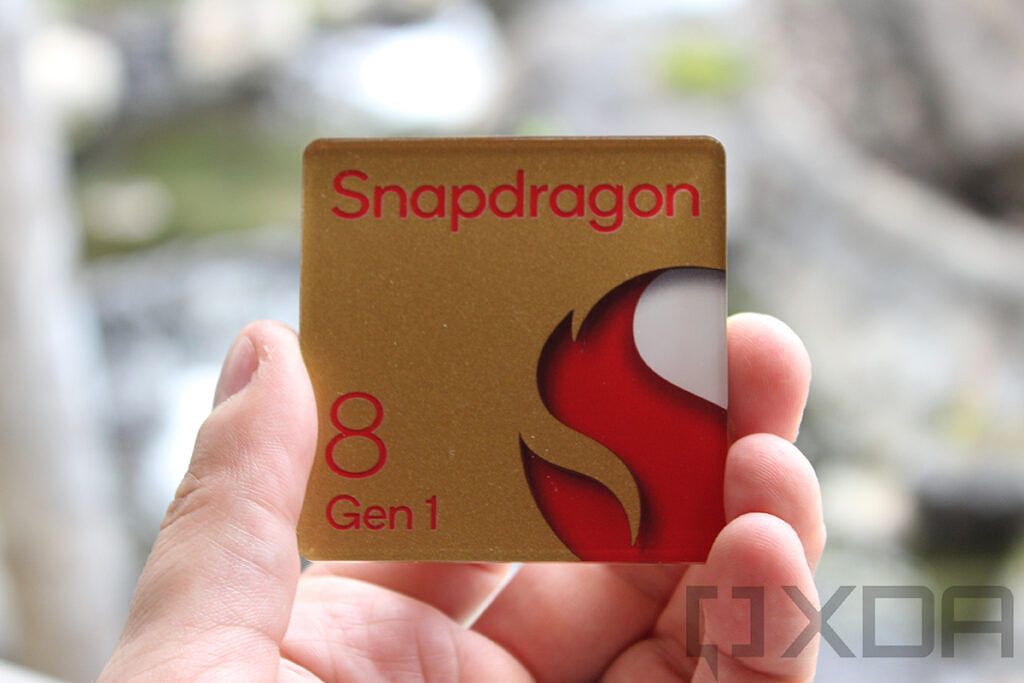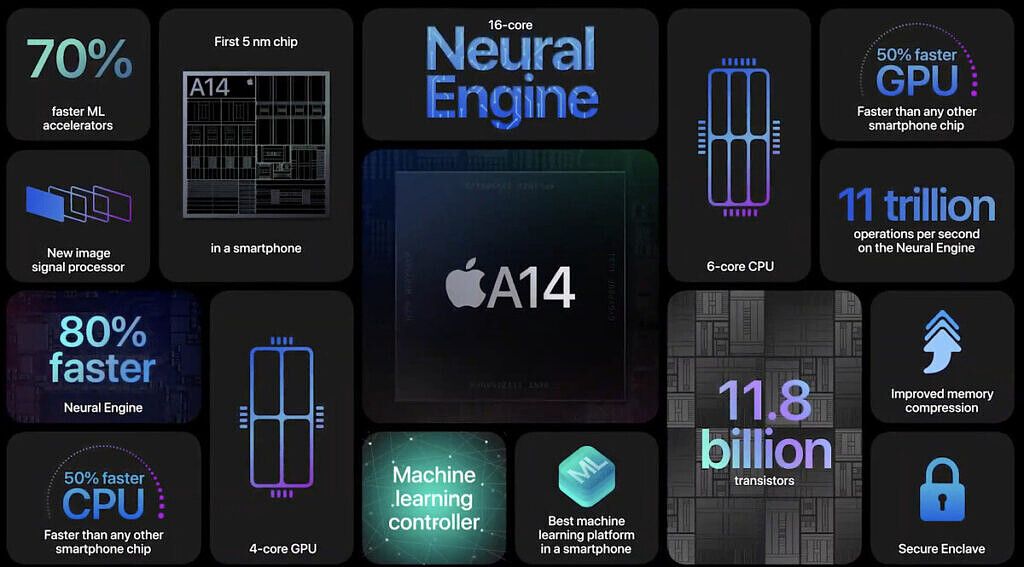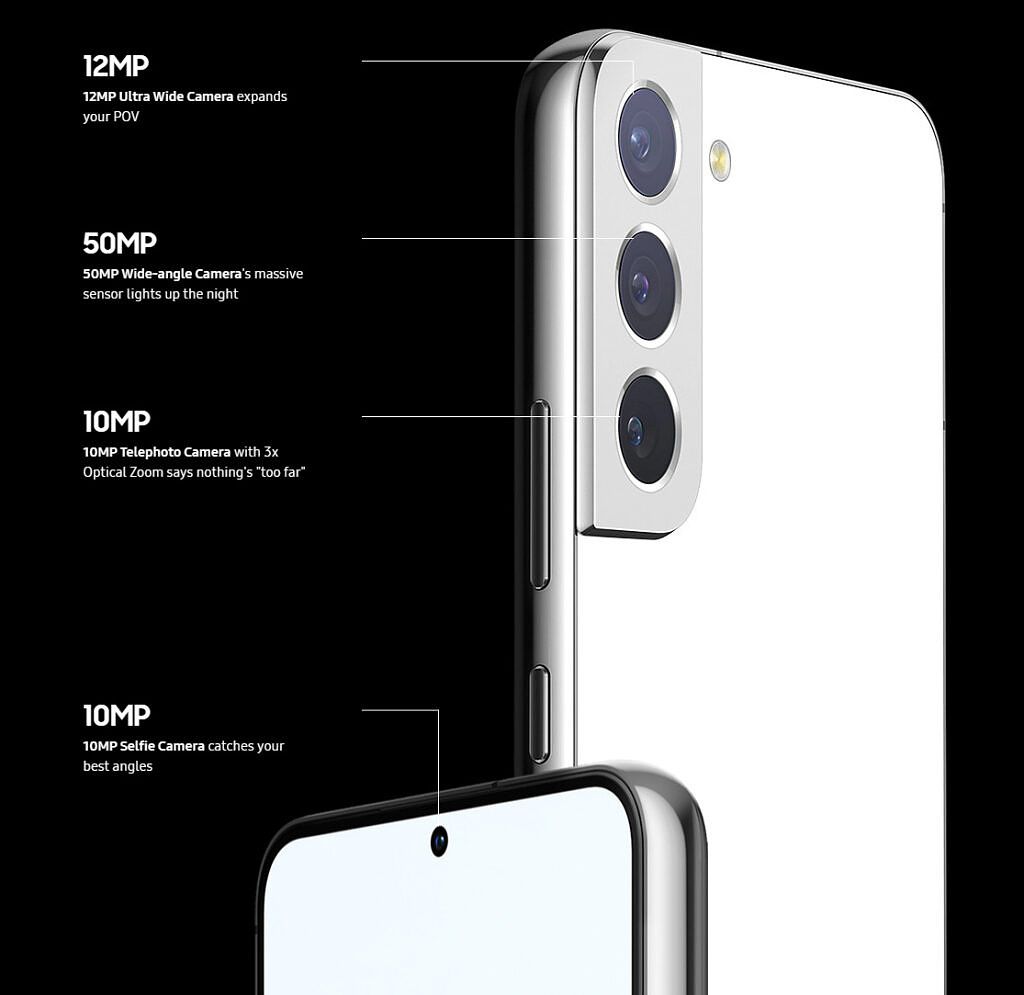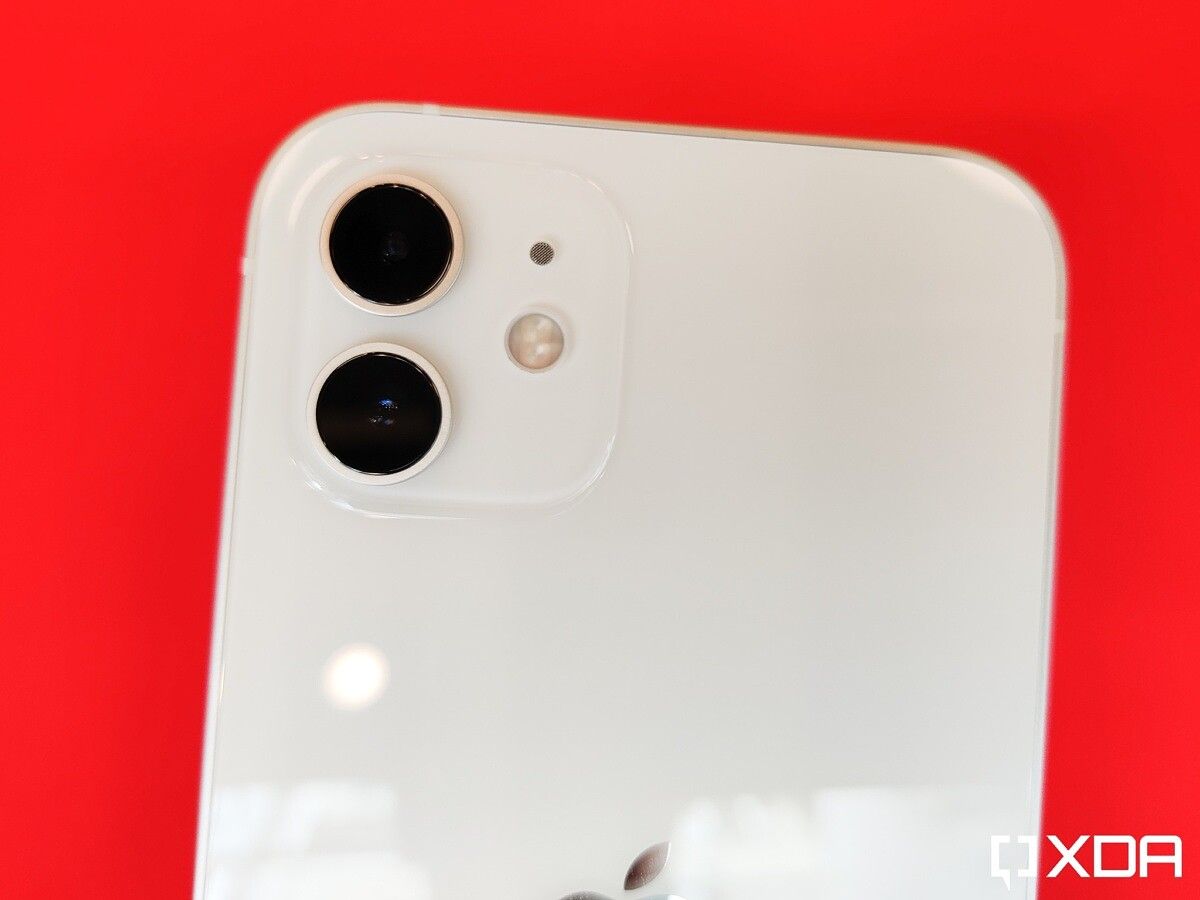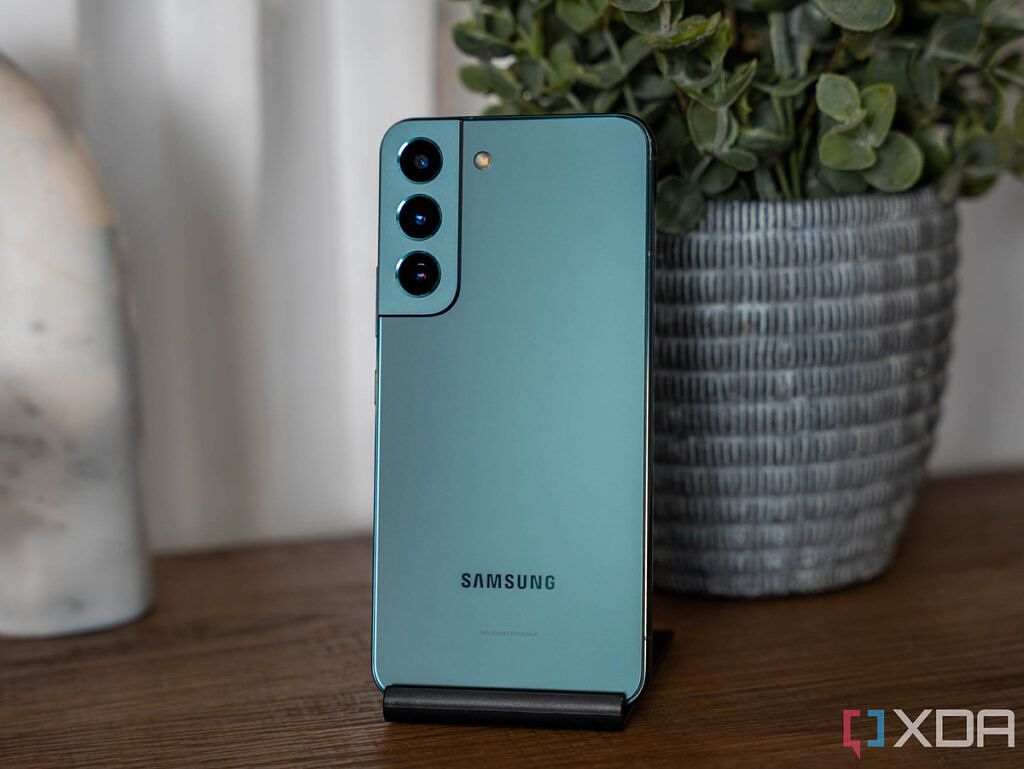Quick Links
In this time and age, smartphones have become essential items that most people can't live without. When they were first introduced to the world, we could still depend on classic mobiles just fine. They were more of an optional upgrade that not everyone justified paying extra for. However, this has changed now — without a smartphone, you can miss out on a lot, including crucial services. Which model should I buy? is a common question that comes to mind when deciding to get a new one. The options are quite endless, and this can be confusing for many people. Samsung and Apple are two major smartphone manufacturers with millions of users depending on their products. The two companies have both similar and different approaches — which lead to diverse outcomes that match various needs and budgets. This is the Galaxy S22 vs iPhone 12 — two flagships aimed at different people.
Samsung Galaxy S22 vs Apple iPhone 12: Specifications
|
Samsung Galaxy S22 |
Apple iPhone 12 |
|
|---|---|---|
|
CPU |
|
|
|
Body |
|
|
|
Display |
|
|
|
Cameras |
|
|
|
Memory |
|
|
|
Battery |
|
|
|
Connectivity |
|
|
|
Water Resistance |
IP68 |
IP68 |
|
Security |
Ultrasonic in-display fingerprint sensor |
Face ID |
|
OS |
One UI 4.1 based on Android 12 |
iOS 15 |
|
Colors |
|
|
|
Material |
|
|
|
Price |
Starts at $799 |
Starts at $699 |
Build and Design
Build and design are two very important aspects to consider when it comes to choosing a new device. Nobody wants to carry a fragile or ugly-looking phone — we aim at what's solid and appealing. Design happens to be a very subjective matter that almost completely depends on individual tastes. However, we can make objective observations and highlight the main features of each device. This only brings your attention to what you might've not noticed and helps you choose.
When it comes to materials, both phones have aluminum frames and glass builds. However, the Samsung Galaxy S22 has a matte back that doesn't attract fingerprints as much as the iPhone 12. Additionally, scratches are more likely to appear obviously on the back of the iPhone — due to its shiny build. The Apple iPhone 12 has a more premium look, thanks to the glass slab design, but it requires gentler handling than the Samsung phone. If you don't plan on using a case and don't work in rough environments, the Galaxy S22 will likely retain its fresh look for a longer time.
When it comes to the arrangement of the rear cameras, both phones have a vertical alignment of lenses with the flashlight placed to their right. Both flagship phones look somewhat similar when observing their backs. They both feature the logos of their respective manufacturer as well. However, the camera bump on the iPhone is slightly thicker.
If we look at the front, though, there are more obvious differences between the two devices. The iPhone has a notch, while the Galaxy S22 goes for hole-punch. Which looks better depends on you personally. I don't find the notch on my iPhone obtrusive, but some people do, and that's okay — options exist for a reason. Otherwise, both phones feature an edge-to-edge screen with thin bezels and no bottom chins.
Display
As we've highlighted, both flagship phones have an edge-to-edge display that makes gaming and consuming digital media an immersive experience. Whether you prefer the hole punch or the notch depends on your preferences. Ultimately, both devices have solid front designs that are easy on the eyes.
When it comes to resolution, the Apple iPhone 12 objectively beats the Samsung Galaxy S22. The former has a resolution of 2532-by-1170p while the latter settles for a 2340-by-1080p one. You won't necessarily be able to tell the difference between the two, but it's important to weigh all of the pros and cons of each device. That's not to say the display of the Galaxy S22 is bad, either. In fact, there are some aspects where the Samsung phone shines over the iPhone.
The Galaxy S22 supports 48-120Hz adaptive refresh rate and 240Hz touch sampling rate in Game Mode. This beats iPhone's 60Hz refresh rate. You will likely see the difference if you're scrolling through lists and playing certain games on your phone. It's worth noting, though, that a higher refresh rate consumes more battery. So depending on your priorities and needs, you may actually prefer the 60Hz.
Speaking of displays, the Samsung phone comes with an in-display fingerprint sensor. This allows you to unlock your phone by placing your registered fingertip(s) on the actual screen. On the other hand, Face ID is what secures the iPhone. This used to be a hassle outdoors — considering we're in the middle of a pandemic. However, iOS 15.4 will allow you to unlock your iPhone 12 even if you're wearing a mask. So Face ID is no longer an issue when it comes to outdoor authentication.
Performance
Performance on mobile devices is a very complicated matter, and there are several aspects to take into consideration. The iPhone 12 is over a year old, but don't underestimate the power of Apple A14 Bionic chip. It may not be the most recent, but it still is a serious competitor capable of landing a punch. The Samsung Galaxy S22 is powered either by Qualcomm's Snapdragon 8 Gen 1 or Exynos 2200. The latter is included in models shipping to Europe and the United Kingdom, while the former ships to the rest of the world. There still aren't any accurate benchmarks for the Exynos chip, so we will be focusing on the Apple A14 Bionic chip versus the Qualcomm Snapdragon 8 Gen 1.
For starters, the Qualcomm chip was released 15 months after Apple's. However, again, don't let the timeline fool you. Newer doesn't always equate to better, and this is partially true here. We've taken a look at NanoReview's benchmarks to evaluate the two chips, and they each dominate different areas.
When it comes to the CPU score — both single-core and multi-core — the A14 Bionic chip defeats the Snapdragon 8 Gen 1. Additionally, Apple's chip is more efficient when it comes to battery life. So you get better performance without draining as much battery power.
The Qualcomm chip wins the GPU round — it performs better in games and OpenCL/Vulcan. Additionally, it has two more cores and a smaller transistor (4 versus 5 nm for the Qualcomm and Apple chips respectively). NanoReview crowns the Snapdragon chip when it comes to the overall score — with Apple's A14 Bionic scoring a single point less in this battle.
If you use your smartphone to play games frequently, then you may want to consider the Samsung Galaxy S22. Otherwise, the Apple iPhone 12 is a faster device that will remain supported and updated for a longer period of time. Additionally, iOS objectively doesn't require as much processing power to run as Android OS. So while the Galaxy S22 has double the amount of RAM, it might not necessarily have a better performance.
Cameras
To some people, cameras are the biggest selling point. If a phone takes good photos and selfies, they buy it — everything else is irrelevant. And that's totally understandable because most smartphones today are capable of doing everyday tasks just fine. The technical specifics and how many years of software updates they receive are pretty much irrelevant to a lot of people. They just want a device that can handle their texting, social media scrolling, note-taking — in addition to taking crisp shots to post online.
On the surface level, we have a clear winner here — the Samsung Galaxy S22 has three rear cameras while the iPhone 12 only has two. The primary camera on the Samsung phone has a 50MP sensor that beats Apple's 12. However, the iPhone 12's has a better aperture of 1.6 — compared to Samsung's 1.8.
Both phones have a 12MP ultra-wide camera with 120º field of view (FoV). However, Samsung's has a better aperture of 2.2, compared to Apple's 2.4. More notably, though, the Galaxy S22 has a 10MP telephoto lens that is absent on the iPhone. Additionally, the Samsung phone supports 30x Space Zoom — which isn't present on the iPhone 12. That could be a dealbreaker to people who want to really zoom in when capturing certain moments.
To some people, the front-facing camera can be a higher priority than the rear-facing one. There are users who mostly depend on the cameras on their phones for selfies and vlogs. In this round, the iPhone 12 wins over the Galaxy S22 — as the phones offer 12MP and 10MP lenses respectively. And thanks to Apple's TrueDepth camera system, users can take studio-like selfies via Portrait Mode. The feature 3D-maps the face and surrounding elements, adds special lighting effects and produces stunning shots as a result.
Battery Life and Charging
This section is tricky — a larger battery doesn't necessarily mean a longer battery life. Some processors consume more power than others, and the phone's operating system and its optimizations affect that as well. The Galaxy S22 has a 3,700mAh battery, while its competitor has a 2,815mAh one. The former promises 54 hours of audio playback on a single charge, which beats the latter's 50-hour promise. However, audio playback isn't an accurate measurement scale. How much other apps consume energy and how long the device lasts on a single charge with normal use matter more. Apple smartphones do last very long on standby, while Android generally has a poorer comparative track record. So in effect, both the phones should just about last you through a day on light-moderate use, though heavier use may kill both of them before that, while on lighter workloads, the iPhone should last longer than the Galaxy S22.
When it comes to charging, Samsung's 25W fast wired charging defeats Apple's 20W. Additionally, the iPhone can charge at up to 7.5W on a Qi wireless charger. The Galaxy S22 doubles that value and goes up to 15W. In Apple's defense, though, the company does offer 15W wireless charging — through MagSafe. Ultimately, Samsung wins this round because it also offers Wireless PowerShare, which is basically reverse wireless charging. This allows users to charge other Qi-enabled phones and accessories through the Galaxy S22 wirelessly. The feature remains missing on all iPhone lineups, including the most recent ones.
Galaxy S22 vs iPhone 12: Which should you buy?
Which smartphone you should buy completely depends on your needs, priorities, and budget. After all, no device is perfect, and they all have their own pros and cons. We've only broken down the features and specifications to help you decide which of the two is for you. It's also worth keeping in mind that the Galaxy S22 runs Android while the iPhone 12 runs iOS. So if you're in a certain ecosystem or one of the two operating systems can't blend into your workflow, then you might have to buy the same ecosystem product for the sake of its OS. Additionally, the iPhone 12 costs $100 less than the Galaxy S22 — if you're on a tight budget, which works slightly in favor of Apple. With the Samsung Galaxy S22, you're getting a newer product with access to a newer set of technologies. Either way, both of these are excellent smartphones.
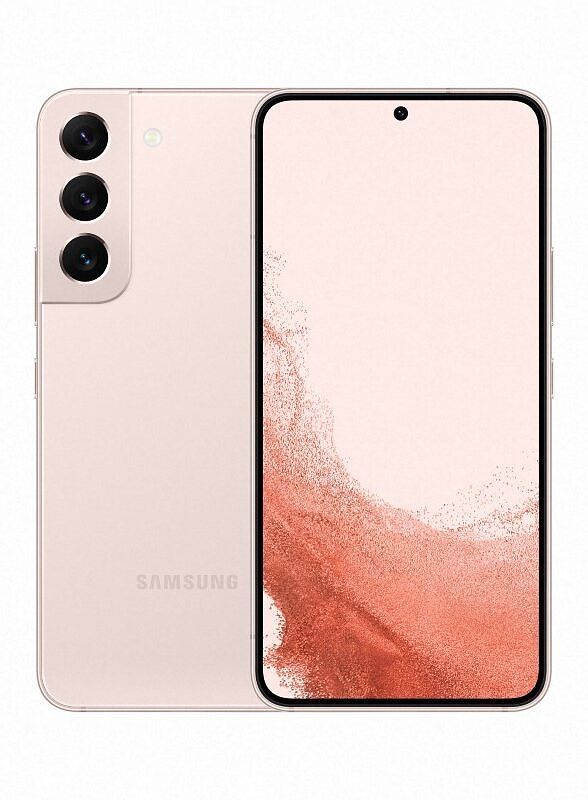
Samsung Galaxy S22
The Galaxy S22 runs One UI 4.1 (Android 12), and has more rear cameras. Its battery and charging capabilities beat the iPhone's, but it costs $100 extra.
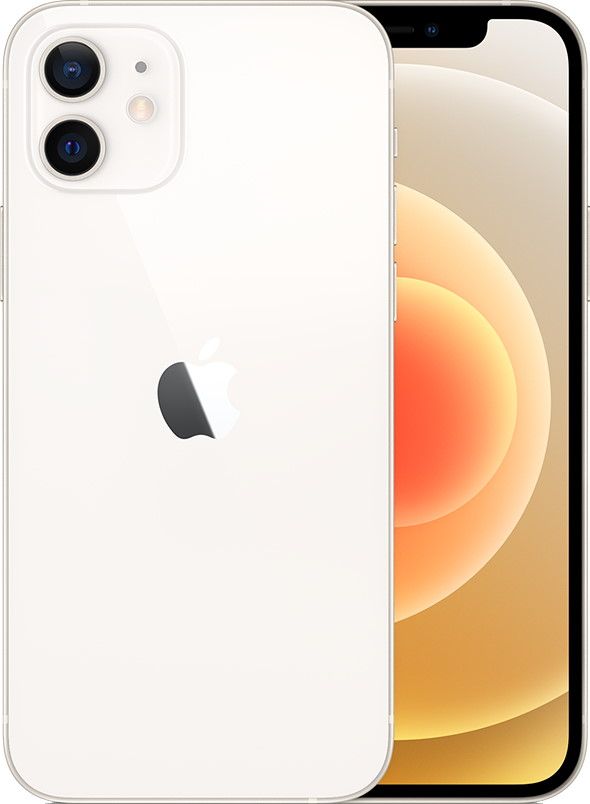
Apple iPhone 12
The iPhone 12 is powered by the A14 Bionic chip and runs the latest iOS 15. It is faster, costs less, and has a higher display resolution than the Galaxy S22.
If you plan to buy the Samsung Galaxy S22, it's not a bad idea to take a look at the Galaxy S22 Ultra — as it's a larger, more powerful phone.
Which of the two phones will you be buying, and why? Let us know in the comments section below.

